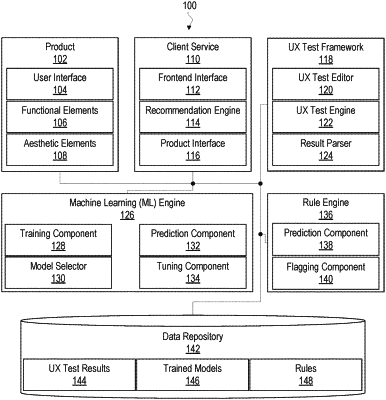| CPC G06N 20/20 (2019.01) | 20 Claims |

|
1. A method comprising:
training a plurality of machine learning models, including a plurality of transformer models, using a set of training examples to optimize at least one user interface flow associated with evaluating product designs, wherein training the plurality of learning models comprises mapping varying subsets of training examples to different transformer models based at least in part on one or more attributes associated with one or more user experience tests;
receiving a result set for a user experience test that includes a plurality of qualitative elements providing feedback associated with a product design;
selecting, by at least one process, at least one trained machine learning model to apply to the plurality of qualitative elements based at least in part on the one or more attributes associated with the user experience test;
generating a set of machine learning vectors as a function of the plurality of qualitative elements;
generating a model output to optimize the at least one user interface flow associated with evaluating product designs by performing at least one pass of the set of machine learning vectors through at least one transformer model associated with the at least one trained machine learning model that was selected, wherein the model output includes at least one of a predicted visibility, quality, or relevance of each qualitative element of the plurality of qualitative elements; and
generating, based at least in part on at least one of the predicted visibility, quality, or relevance of each qualitative element of the plurality of qualitative elements, a user interface associated with the result set for the user experience test, wherein the user interface determines whether to include each qualitative element in a visible set of user interface elements based at least in part on at least one of the predicted visibility, quality, or relevance of the qualitative element.
|